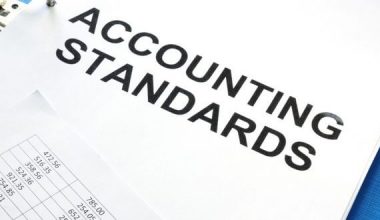What is Discounted Cash Flow?
Discounted Cash Flow Valuation (DCF) is a technique that helps determine an investment’s value based on its projected future cash flows. Using estimates of how much money an investment will make in the future, DCF valuation seeks to determine the value of an investment today.
It can aid those who are trying to decide whether to purchase securities or a company. Business owners and managers can use discounted cash flow analysis to help them make decisions about operating and capital budgets.
How to do DCF Valuation
The goal of DCF valuation is to determine how much money an investor would make from a transaction after accounting for the time value of money. Any situation where someone is paying money now with the hope of receiving more money later on can benefit from a DCF valuation.
For instance, $50 in a savings account will be worth $55 after a year at a 10% annual interest rate.
Using a discount rate, discounted cash flow valuation determines the present value of anticipated future cash flows. The idea of the present value of money can be used by investors to assess whether the future cash flows of a project or investment will be more valuable than the initial investment.
You can consider the opportunity if the calculated DCF value is greater than the investment’s current cost. It may not be a good opportunity, or more research and analysis may be required before moving forward with it if the calculated value is less than the cost.
To perform a DCF analysis, an investor must forecast future cash flows as well as the eventual value of the asset or investment.
What is DCF Example?
- Free cash flow (FCF):
All capital providers can receive the money the business generates from its tangible and intangible assets.
As it represents cash flow that is available to all capital providers and is unaffected by the capital structure of the business, FCF is also referred to as free cash flow.
- Terminal value (TV):
Value after the projected FCF period (horizon period).
- Discount rate:
This refers to the rate at which terminal value and projected FCFs are discounted to their present values.
How Do You Calculate DCF Value?
DCF Valuation Formula is:
CF1 = Cash flow for year one
CF2 =The cash flow for year two
CFn =This is the cash flow for additional years
r=The discount rate
How Do You Calculate DCF Step by Step?
Here are the seven steps to calculating DCF valuation:
Step 1: Projecting Financial Statements
Choosing the forecasting period is the first thing you should do when using DCF analysis because businesses, unlike people, have an infinite lifespan. Analysts must therefore determine how far into the future they should project their cash flow.
The forecasting period for the analysts is based on the stages of the company, such as high growth rate and perpetual growth rate.
Step 2: Calculate the Firm’s Free Cash Flow
Calculating the firm’s free cash flow is the second step in a DCF analysis. We must first define free cash flow before we can estimate future free cash flow. Free cash flow is the money that remains after a business has paid all necessary operating and capital expenses.
Therefore, by creating new products, establishing new facilities, paying dividends to its shareholders, or starting share buybacks, the company uses this free cash flow to accelerate its growth.
Step 3: Calculate the Discount Rate
The third step of the discounted cash flow valuation analysis is to determine the discount rate. The discount rate is calculated in a variety of ways. But applying the idea of the weighted average cost of capital, or WACC, is the most appropriate way to calculate the discount rate.
But first, make sure that the equity and after-tax cost of the debt that you have chosen is accurate.
Step 4: Calculate the Terminal Value
The terminal value is calculated in the fourth step of discounted cash flow analysis. Except for the terminal value, all of the essential DCF analysis components have already been calculated. As a result, we will now determine the terminal value before determining the discounted cash flow analysis.
Step 5: Calculate the Present Value
Finding the present values of free cash flows to the firm and terminal values is the fifth step in the discounted cash flow analysis.
Step 6: Make Adjustments
The adjustment of your enterprise valuation is the sixth step in the discounted cash flow analysis. By adding unusual assets or removing liabilities, one can adjust the valuation to arrive at the adjusted fair equity value.
Step 7: Calculate the Sensitivity Analysis
Calculating the output’s sensitivity analysis is the seventh step in discounted cash flow analysis. Testing your DCF valuation models with the new assumptions is crucial. The two most crucial notions that significantly influence valuations are:
- Variations in the rate of infinite growth
- The weighted average cost of capital variations
DCF Valuation Methods
The DCF valuation methods involve estimating Free Cash Flow over a period of time, determining the terminal value after that period, and discounting the projected FCFs and terminal value using the discount rate to arrive at the net present value (NPV) of the total expected cash flows of the company or asset.
- Accomplishments: The company’s actual free cash flow, cash flow projections, and other specified variables are used to determine how well-rounded a value is.
- Advantages: The advantages based on the company’s essential financial data are not impacted by fluctuating market perception variables.
- The Limitations: limitations based on potentially inaccurate future projections depending on how those projections differ, the valuation can change drastically.
- The Most Used: most frequently used for long-standing, reliable businesses Businesses in sectors with a more stable cash flow.
Is DCF a Good Valuation Technique?
A discounted cash flow analysis’ primary benefit is that it uses actual financial data, namely the cash flow that the company generates. These models can be wrong because the analysis might not accurately reflect the company’s fundamental financial health.
Discounted cash flow has the drawback that it is dependent on projections of future cash flow. These projections are only best-effort predictions of the future, although they are based on the current cash flow.
Additionally, analysts can be incredibly inaccurate, especially when they try to predict cash flow several years in the future. The discounted cash flow analysis may calculate a value incorrectly as a result of these errors.
Advantages of a Discounted Cash Flow Analysis
Some of the main benefits of a discounted cash flow analysis are as follows:
- To arrive at a value, it uses specific numbers that include important assumptions about a business, such as cash flow projections, growth rate, and other measures.
- DCF valuation determines a business’ value: Furthermore, it determines value independently of arbitrary market sentiment and is more objective than other approaches.
- No need for Comparables: DCF analysis does not demand that market values be compared to those of similar businesses.
- Considers Long-Term Values: It evaluates a project’s or investment’s earnings throughout its entire economic life and takes the time value of money into an account.
- DCF valuation enables objective comparison: By analyzing various companies or investments, DCF analysis enables you to arrive at a uniform and objective valuation for all of them.
- The Use of Excel Spreadsheet: You can perform a discounted cash flow analysis without the aid of specialized software by using an Excel spreadsheet.
- DCF Valuation Allows for Sensitivity Analysis: The discounted cash flow model enables experts to evaluate how adjustments to their investment assumptions would impact the model’s output.
Disadvantages of a Discounted Cash Flow Analysis
Some of the cons of a discounted cash flow analysis are as follows:
- Complicated: The analysis might become overly complicated as a result of the data requirements for the discounted cash flow calculations.
- It can lead to overconfidence: Consequently, people perform a discounted cash flow analysis using specific data and projections, so the resulting valuation may receive more trust than is necessary.
- DCF analysis doesn’t Consider Competitor Values: The fact that discounted cash flow is exempt from this requirement can be both a benefit and a disadvantage.
- Another element used in the discounted cash flow analysis, the weighted average cost of capital (WACC) of the subject company, can be tricky to accurately calculate.
- Discounted cash flow can evaluate investments of a variety of different types, but it is less skilled at evaluating investments of radically different sizes.
What is NPV (Net Present Value)?
Net Present Value helps compare a company’s internal and external investments. The NPV plays a significant role because it can be challenging to compare various investments, particularly when various values and profits are payable at various intervals.
Furthermore, the distinction between the present values of cash inflow and outflow is known as the net present value. The Net Present Value, to put it simply, contrasts the value of money now with the value of that same money in the future.
Is DCF Same as NPV?
Unlike the DCF calculation, which discounts the present to the future, the NPV calculation discounts future cash flows back to the present. When analyzing an investment and estimating its future value, the discounted cash flow method is helpful.
Therefore, an investor can determine the returns that would be received for their investments and how long it would take to receive those returns using the discounted cash flow method.
Analyzing the discounted future cash flow is how to do DCF valuation. The techniques used in discounted cash flow are NPV and internal rate of return. Future cash flow is multiplied by a rate in NPV.
The Net Present Value, to put it simply, contrasts the value of money now with the value of that same money in the future. Investors are constantly searching for high NPVs.
Others Things You Need to Understand About Discounted Cash Flow?
Additional information regarding discounted cash flow is as follows:
- In order to use DCF effectively, it’s critical to have a solid grasp of the time value of money concepts.
- The anticipated cash flows and the discount rate are the two most crucial inputs in a DCF analysis.
- The risk factors related to the cash flows being discounted should be used to determine the discount rate.
- The projected cash flows need to be attainable and realistic.
- A DCF analysis’ findings should be combined with other methods of valuation.
Conclusion:
The Discounted Cash Flow (DCF) formula is a crucial tool for business valuation that is used to value an entire company for mergers and acquisitions. It is crucial for assessing financial instruments like bonds, stocks, and other assets that can generate income and whose cash flows can be predicted or modeled.
Related Articles:
- CASH FLOW MANAGEMENT: Best Ways to Manage Your Cash Flow Effectively
- Invoice Discounting: Explained!! (+ Quick tools & amp; all you need)
- Tips for Making the Most of your Money as a College Student
- HRIS SOFTWARE: Top 10+ Softwares To Use In 2023






